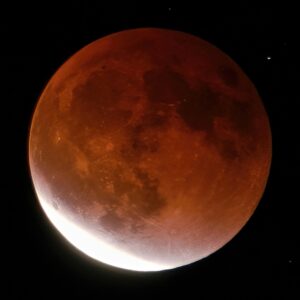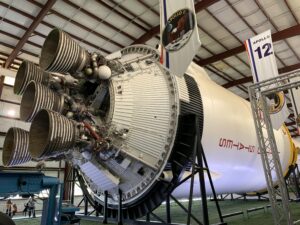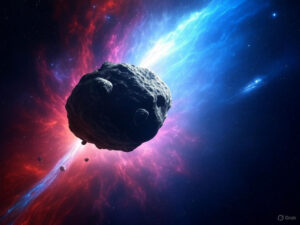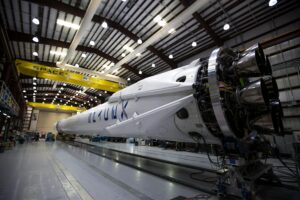Ever seen space rocks flying by or orbiting the asteroid belt? This guide explains the basics of asteroids, meteoroids, and comets. You’ll learn about their unique features, where they are found, and why they’re important for understanding space. From the rocky asteroid belt between Mars and Jupiter to comet tails, each object tells us about our solar system’s past.

Key Takeaways
- Learn how asteroids differ from meteoroids and comets
- Explore the asteroid belt’s role in shaping planetary science
- Discover what comets’ icy cores reveal about ancient space
- Understand why meteoroids matter when they enter Earth’s atmosphere
- See how these cosmic bodies connect to life and geology here on Earth
Understanding Cosmic Bodies: An Introduction
Exploring space begins with the basics. Let’s look at asteroids, meteoroids, and comets. We’ll learn about their origins, behaviors, and how they help us understand the universe.
What Are Asteroids?
Asteroids are rocky bodies from the solar system’s early days. They orbit the sun, mostly between Mars and Jupiter. Imagine them as space boulders:
- Most are irregularly shaped
- Range from pebbles to Ceres, a dwarf planet 580 miles wide
- Many are remnants of planet formation
What Are Meteoroids?
Meteoroids are tiny space fragments, often no bigger than a grain of sand. When they enter Earth’s atmosphere, they create fleeting beauty:
- 95% burn up as meteors (shooting stars)
- Rare survivors become meteorites
- Most originate from asteroid collisions
What Are Comets?
Comets are cosmic snowballs made of ice and dust. Their most iconic feature? comet tails—glowing plumes that form as they near the sun:
- Tails can stretch millions of miles
- Two types: gas and dust tails
- Visible only during their close solar approach
These bodies aren’t just space debris—they’re time capsules holding clues about our solar system’s birth. Next, we’ll dive deeper into their differences and cosmic roles.
Historical Discoveries and Their Impact
From ancient stargazers to today’s telescopes, past discoveries have shaped our science. In 1908, the Tunguska event in Siberia showed us the power of meteoroid impacts. These moments sparked curiosity and drove research forward.

- 1908 Tunguska Event: A fireball flattened 800 square miles of forest, revealing how meteoroid impact can reshape landscapes.
- 1960s Space Missions: NASA’s early probes first captured close-up images of asteroids, proving they’re more than just space rocks.
- 1994 Shoemaker-Levy 9: Jupiter’s comet collision showed how celestial bodies affect planetary systems, inspiring new safety measures.
“Every crater on the moon is a page in Earth’s history book.” – Edward Barnard, 1895 astronomer notes
These milestones teach us how to track near-Earth objects today. When you gaze at the night sky, remember: each discovery builds on past mysteries. Missions like OSIRIS-REx use data from these events to study asteroid Bennu, aiming to prevent future collisions. Past observations aren’t just history—they’re tools for protecting our planet.
Physical Characteristics that Define Each Body
Discover how each cosmic object is unique. Their makeup and shape tell us about the early solar system formation. Let’s see what makes each one special.
Composition Differences
Asteroids are mostly rock or metal, leftovers from the solar system’s start. Meteoroids are tiny, rocky or iron pieces. Comets, on the other hand, are icy with dust and organic stuff. These differences show where they came from in the universe’s early days.
| Body | Composition |
|---|---|
| Asteroids | Rock, metal (iron/nickel) |
| Meteoroids | Rocky or metallic fragments |
| Comets | Ice, dust, carbon-based compounds |
Size and Shape Variations
Asteroids come in all sizes, from miles wide to tiny rocks. Their shapes are often irregular because of collisions. Meteoroids are small, from a grain to a football. Comets have long tails when they get close to the sun, showing their icy centers.
- Asteroids: 0.6 to 583 miles (1–940 km) wide
- Meteoroids: 1 inch to 33 feet (2.5 cm to 10 meters)
- Comets: Nuclei range 0.6 to 6 miles (1–10 km), with visible tails
These features are more than looks—they’re clues to how our universe came together. Next time you look up, remember: every rock and streak has a story of our universe’s history.
Orbital Mechanics: Pathways Through Space
Imagine the solar system as a cosmic dance.

These paths aren’t random. They’re shaped by forces we can learn to understand.
Gravity from planets like Jupiter and the Sun acts like an invisible hand. It pulls these bodies into orbits. They loop, dash, or spiral through space. It’s like a game of celestial billiards, where each object’s speed and angle matter.
- Asteroids often orbit the Sun in the asteroid belt between Mars and Jupiter.
- Meteoroids streak through our atmosphere on chaotic paths before burning up.
- Comets swing in long, stretched paths that sometimes bring them near Earth.
| Body Type | Orbit Type | Key Factor |
|---|---|---|
| Asteroids | Near-circular | Earth’s gravity nudges some into new paths |
| Meteoroids | Short-term | Friction burns most before they land |
| Comets | Elliptical | Ice tails glow as they near the Sun |
Scientists track these paths using telescopes and spacecraft. NASA’s OSIRIS-REx mission even landed on asteroid Bennu to study its orbit. By mapping these pathways, we unlock secrets of space exploration and protect Earth from potential collisions. Every orbit tells a story about how our solar system moves and changes.
Exploring the Difference Between Asteroids, Meteoroids, and Comets
Ready to dive deeper into how these cosmic travelers stack up? Let’s break down their key differences and what they mean for our solar system.
Key Traits Comparison
Here’s what sets them apart:
- Composition: Asteroids are rocky, meteoroids are tiny debris, and comets are icy mixtures with tails.
- Size: Asteroids can be miles wide, meteoroids are pebble-sized, and comets often have nuclei up to 6 miles across.
- Orbit Paths: Asteroids loop near the asteroid belt, comets swing in long elliptical loops, and meteoroids blaze through Earth’s atmosphere as shooting stars.
Impact on the Solar System
Each plays a role in shaping cosmic history. Comets deliver water and organic compounds, hinting at life’s origins. Asteroids collide, reshaping planetary surfaces. Meteoroid showers remind us of our dynamic universe. Ongoing astronomy discovery tracks these interactions, revealing clues about Earth’s past and future.
Every crash, orbit shift, or comet tail offers a new piece of the puzzle. By studying their paths and materials, scientists uncover how our solar system evolved. Next time you see a shooting star, you’re witnessing a tiny part of this grand cosmic story.
Myths and Misconceptions Dissected
Sorting fact from fiction in space exploration can be tricky. You might’ve heard stories about asteroids colliding constantly or the asteroid belt being a chaotic maze. Let’s clear up the confusion with science-backed facts!

- Myth 1: Spaceships get stuck in the asteroid belt like a minefield. Reality: The asteroid belt has huge gaps—NASA probes zip through it easily.
- Myth 2: Every meteorite on Earth came from the asteroid belt. Reality: Most meteorites originate from near-Earth asteroids, not the main asteroid belt.
- Myth 3: Comets and asteroids are the same. Reality: Comets have icy cores; asteroids lack the frozen gases that make comets shine.
Next time you hear a space story, ask: “Is it backed by data?” The asteroid belt holds wonders—but not the chaos movies show! Explore NASA’s website for real missions studying these cosmic puzzles.
Modern Research Techniques and Technologies
Scientists are using advanced tools to explore space like never before. Telescopes and robotic probes capture stunning details of asteroids, meteoroids, and comet tails. These tools reveal clues about their origins and journeys.
Advanced imaging and spectral analysis tools help track changes in these fleeting phenomena.

Space Missions and Observations
Recent missions like ESA’s Rosetta spacecraft gave us close-up views of comet tails near the Sun. NASA’s Stardust mission even collected dust from a comet’s coma. Ground-based telescopes use adaptive optics to sharpen distant views.
Here’s what drives discoveries:
- Infrared cameras map heat signatures in comet tails
- Laser altimeters profile surface terrain on asteroids
- Solar wind sensors track interactions with comet gases
Future Investigations
Upcoming missions plan to deploy autonomous drones to land on comets and study their icy cores. Next-gen telescopes like the James Webb Space Telescope will analyze comet tails for organic compounds. Citizen scientists can join NASA’s Comet Hunters project to classify tail formations in telescope data.
Every discovery brings us closer to understanding these celestial travelers. And how they shaped our solar system.
How These Celestial Bodies Affect Earth’s Environment
Earth’s connection to space is more than just a curiosity. It’s a real force that shapes our planet. Meteoroid impacts, though rare, leave lasting marks. Imagine a tiny rock hitting Earth at speeds over 25,000 mph.
These events can create craters, like Arizona’s Barringer Crater. Or they can start wildfires and cause shockwaves, as seen in Russia’s 2013 Chelyabinsk event.
Meteor Showers and Impacts
Meteor showers light up the sky, burning up as streaks. But when larger objects survive entry, meteoroid impact effects can vary. Some create craters, while others send debris into the atmosphere.
Scientists study these collisions to understand risks and Earth’s geological history.
Climate and Geology Links
- Climate shifts: Massive meteoroid impact dust clouds could block sunlight, affecting global temperatures.
- Geological formations: Impact sites hold minerals and rock layers that reveal Earth’s past.
- Biodiversity clues: Studying craters helps trace events like the dinosaur extinction, linking space and life’s evolution.
Every crater and meteorite fragment tells a story. By tracking these celestial visitors, you’re part of uncovering how space events shape our world. Stay curious—the sky’s next visitor might rewrite Earth’s next chapter.
Engaging with Astronomy: Where to Learn More
Ready to explore the wonders of space even deeper? Start with these resources to learn about solar system formation and cosmic bodies like asteroids and comets.
Begin with free platforms like NASA’s website or apps like SkyView to see constellations in real time. Online courses from Coursera or edX offer classes on solar system formation and planetary science. Books like The Formation and Evolution of Celestial Bodies by Dr. Emily Carter provide in-depth insights.
| Resource | Description | Topics Covered |
|---|---|---|
| NASA’s Asteroid Grand Challenge | Interactive tools and citizen science projects | Orbital paths, solar system formation |
| Virtual Telescope Projects | Live space viewing events | Comet tails, asteroid composition |
Join local astronomy clubs or attend planetarium shows to see simulations of solar system formation. Follow scientists on social media for live updates from space missions. Every resource helps unravel how planets and cosmic debris shaped our universe.
“The best way to understand space is to ask questions and keep looking up.” – Dr. Raj Patel, Planetary Scientist
Explore these options to deepen your knowledge and connect with others passionate about space. Every discovery brings us closer to understanding our place in the cosmos.
Integrating Findings: Your Role in Cosmic Discovery
Every stargazer, amateur astronomer, or curious mind can help with space exploration. Your curiosity is more than a hobby—it’s a way to uncover cosmic secrets. Here’s how you can get involved:
Citizen Science Opportunities
Join projects like NASA’s Meteor Counter app. Here, you log sightings to track space debris paths. Or, classify galaxies via Zooniverse, helping astronomers map the universe. Your time helps scientists plan missions and protect Earth from threats.
- Meteor Counter App: Report fireballs and asteroid trails.
- Galaxy Zoo: Classify celestial objects to aid research.
Community Events and Outreach
Local astronomy clubs host star parties where you can see planets through telescopes. Events like International Observe the Moon Night connect you with experts. Sharing your passion online or at schools inspires others to explore the cosmos.
| Event Type | Description | How to Join |
|---|---|---|
| Star Parties | Guided night sky viewing sessions | Search “astronomy club near me” |
| Citizen Science Fairs | Learn tools to analyze cosmic data | Check NASA’s events calendar |
Your observations are important. Every click, photo, or shared story brings us closer to understanding the universe. Explore these avenues today—your contribution could shape the next big discovery.
Conclusion
Your journey through space has shown us how asteroids, meteoroids, and comets shape our neighborhood. Each one tells us about the solar system’s beginnings. From rocky asteroids to icy comets, they all play a part.
Astronomers track these objects to predict impacts and study their makeup. This is all part of ongoing astronomy discovery.
New missions like NASA’s DART and ESA’s Rosetta share important data. Your curiosity drives us forward. You can help by joining online platforms like Zooniverse or attending local star parties.
Every observation helps us map the universe. Stay curious and keep exploring.
Follow updates from telescopes like Hubble or James Webb. Share what you learn with friends. Your efforts connect you to a global community of astronomers.
The cosmos is vast, but together we uncover its secrets. We do this one discovery at a time.
FAQ
What is the main difference between asteroids, meteoroids, and comets?
Asteroids are rocky bodies in the asteroid belt between Mars and Jupiter. Meteoroids are small pieces from asteroids or comets. Comets are icy bodies that get a tail when near the Sun.
How do we categorize asteroids, meteoroids, and comets?
We categorize them by size and what they’re made of. Asteroids are big, meteoroids are small, and comets are icy. This helps us understand their differences.
Can asteroids, meteoroids, and comets impact Earth?
Yes, they can. Asteroids can cause big damage. Meteoroids can enter our atmosphere and sometimes land as meteorites. Comets might also hit Earth if their paths cross.
What are some famous examples of comets?
Famous comets include Halley’s Comet and Comet NEOWISE. They are known for their bright tails and unique paths.
How do astronomers study these celestial bodies?
Astronomers use space missions, telescopes, and data analysis. Missions like NASA’s OSIRIS-REx and the European Space Agency’s Rosetta have helped a lot.
How can I get involved in astronomy and cosmic research?
You can join citizen science projects or visit local observatories. Attending events and joining clubs can also help you learn more.
How do meteor showers occur?
Meteor showers happen when Earth passes through trails left by comets or asteroids. As we go through these trails, particles burn up, creating the streaks we see.
Are there any myths about asteroids or comets?
Yes, many myths exist, like thinking all meteors are dangerous. But most just burn up. Knowing the truth helps clear up these myths.
What is the future of research on asteroids and comets?
The future looks bright with many missions planned. These will help us learn more about planet formation and our solar system.













